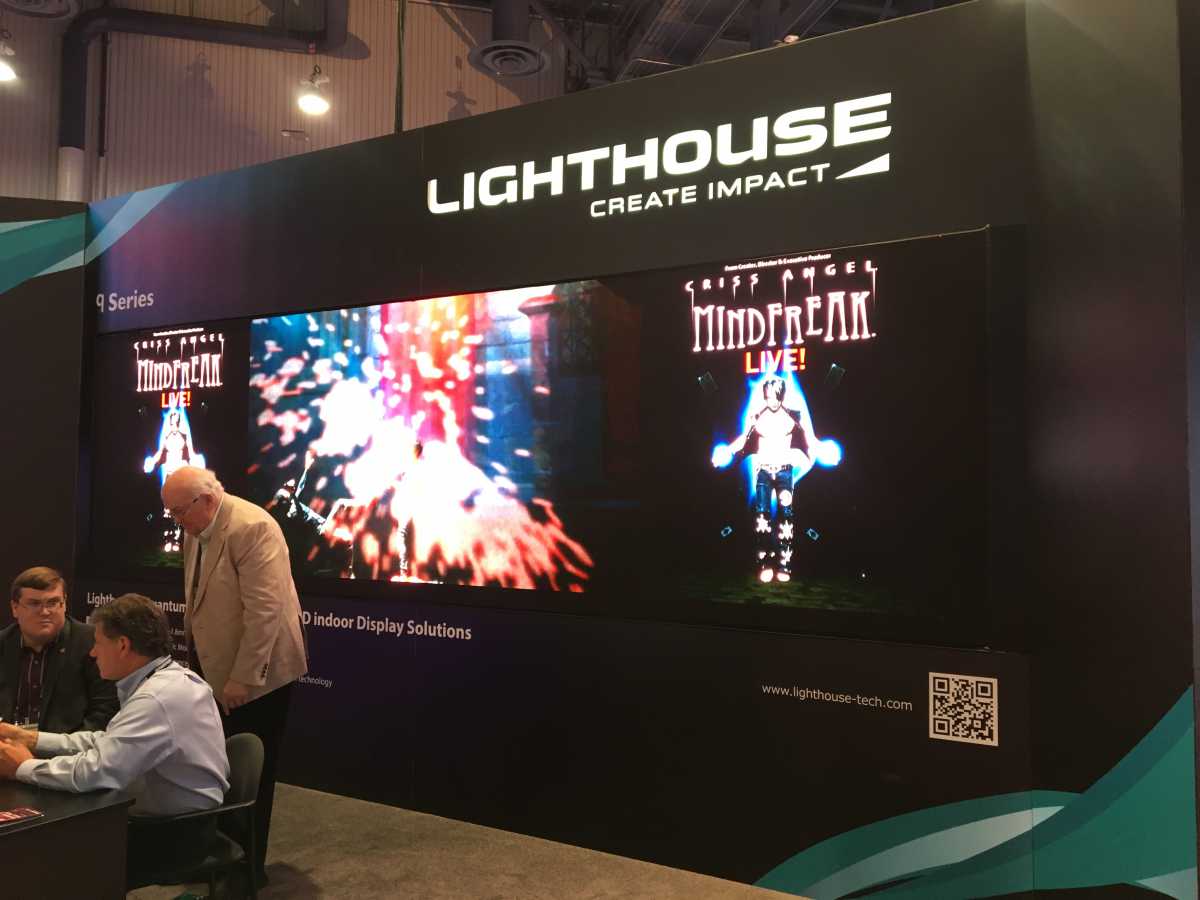Demand for LED displays has risen in recent years and so has the number of manufacturers looking to cash in on the growing video category. As a result, there are too many unsubstantiated marketing claims, phantom features and general misconceptions about LED display technology. This makes it hard to pick a good LED display.
[related]However, veteran AV consultant Alan Brawn of Brawn Consulting, offers some tips for cutting through the clutter and making confident decisions when choosing the best LED display for your project.
During InfoComm 2018 in Las Vegas, it was easy for Brawn to point toward an area of the trade show floor that was seeming with LED display manufacturers.
He did so from Lighthouse’s booth where the Hong Kong-based 20-year-veteran video manufacturer debuted its Quantum q-Series displays and showed off its Dynamic Series fine pitch direct-view LEDs.
Brawn described the LED market as “outsized,” estimating that there are about 1,000 direct-view LED suppliers in China alone. Not many, he said, are investing in R&D needed to create quality products. “Others are just spending their marketing budget.”
Meanwhile, those marketing budgets are often well spent, creating confusion in the marketplace and making it difficult for integrators and end users looking to invest in a good LED display. As such, Alan Brawn offered some tips for choosing a quality LED Video wall.
How to Pick a Good LED Display
- Pay attention to the company’s history, Brawn says. He wasn’t just referring to Lighthouse and its decades-long track record in the display market, but to other well-established brands that he says should instill confidence in technology decision makers.
- Do they have a U.S. presence? This isn’t about patriotism, but customer support. “Go to XYZ company and they have no history in the U.S.,” Brawn says, adding that only about one in six direct-view LED manufacturers have U.S presences. That’s a problem, obviously, post purchase and installation when potential issues arise. Hong Kong-based Lighthouse, as an example, has significant operations and support in the U.S.
- What manufacturing standards exist? In many cases, relatively cheap alternatives are inexpensive for a reason. Brawn suggestions that integrators look closely at direct-view LED manufacturers to ensure that they have mandated quality standards.
- Look at components quality. The old adage that you get what you pay for is even more true in the direct-view LED market, according to Brawn. He warns integrators and tech decision makers to make sure their manufacturing partners are using quality parts and components.
- R&D is critical. There is an element among many direct-view LED manufacturers of trying to get in while the getting is good – while demand for these displays is on the rise. In many cases, zero effort is put into R&D. Brawn suggests that integrators do their due diligence to make sure that their direct-view LED manufacturers are pushing the envelope when it comes to these all-important pieces of their video wall projects and beyond.
- Is the sales channel solid? As integrators know, it’s important for manufacturers to respect the AV integration channel and avoid selling direct to customers who may not have the ability to incorporate products effectively into an integrated system. Many direct-view LED display makers don’t respect that approach, Brawn says. When it comes to choosing an LED partner, he adds, their sales channel “simply can’t be direct to end users.”
While each of these decision-making factors may be self-evident, all too often people do get lazy. “They gravitate to shiny things,” Alan Brawn says. “Be diligent. Do research to find what you really need.”










